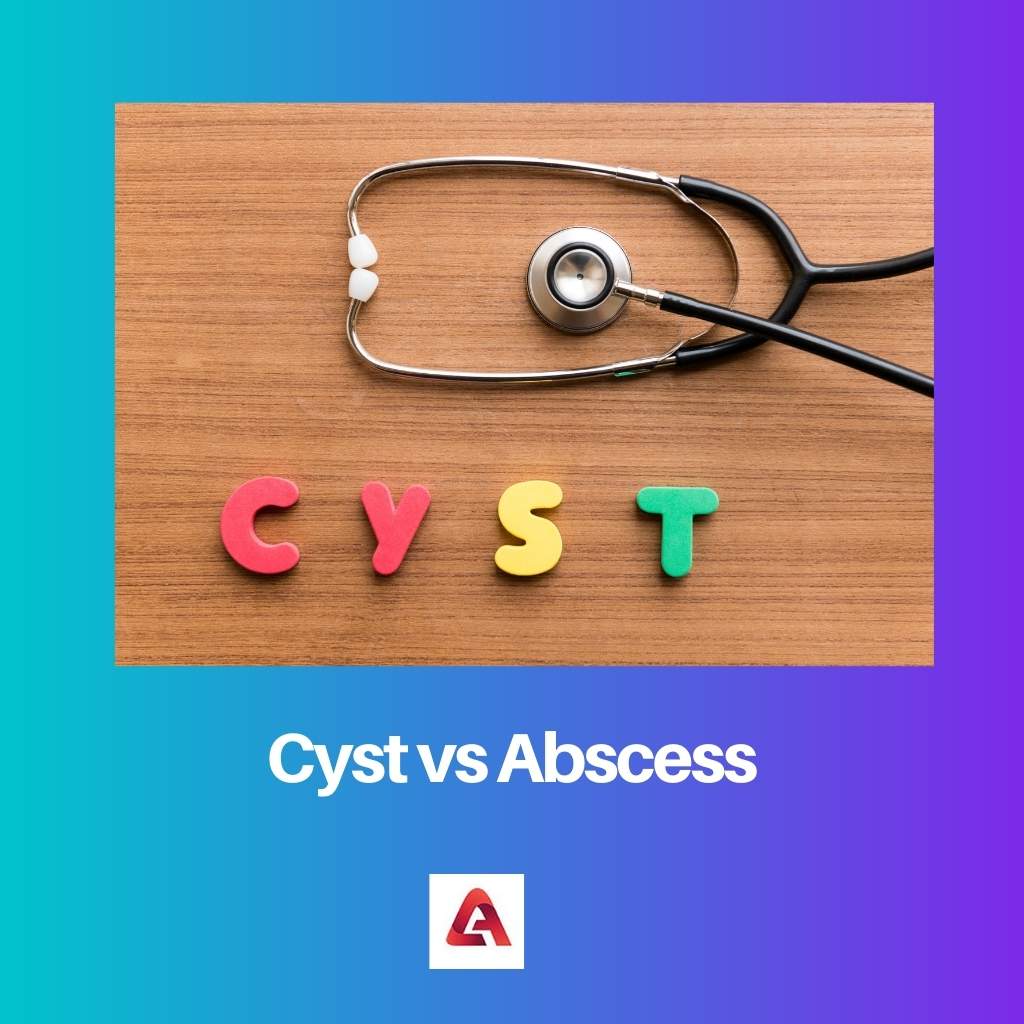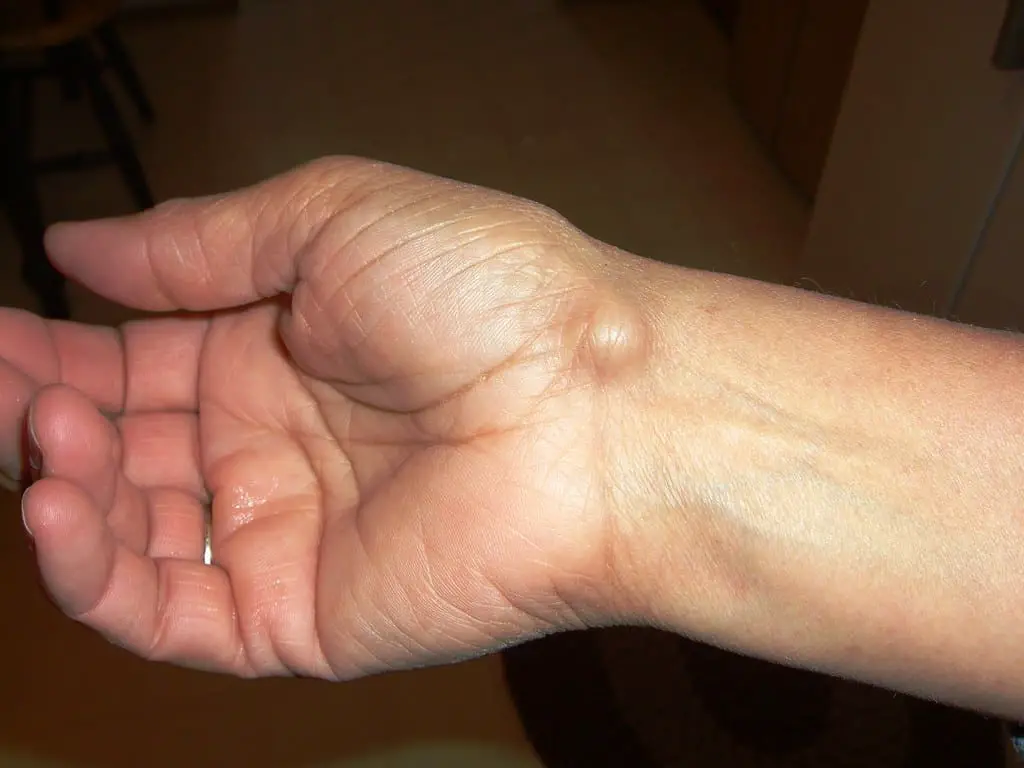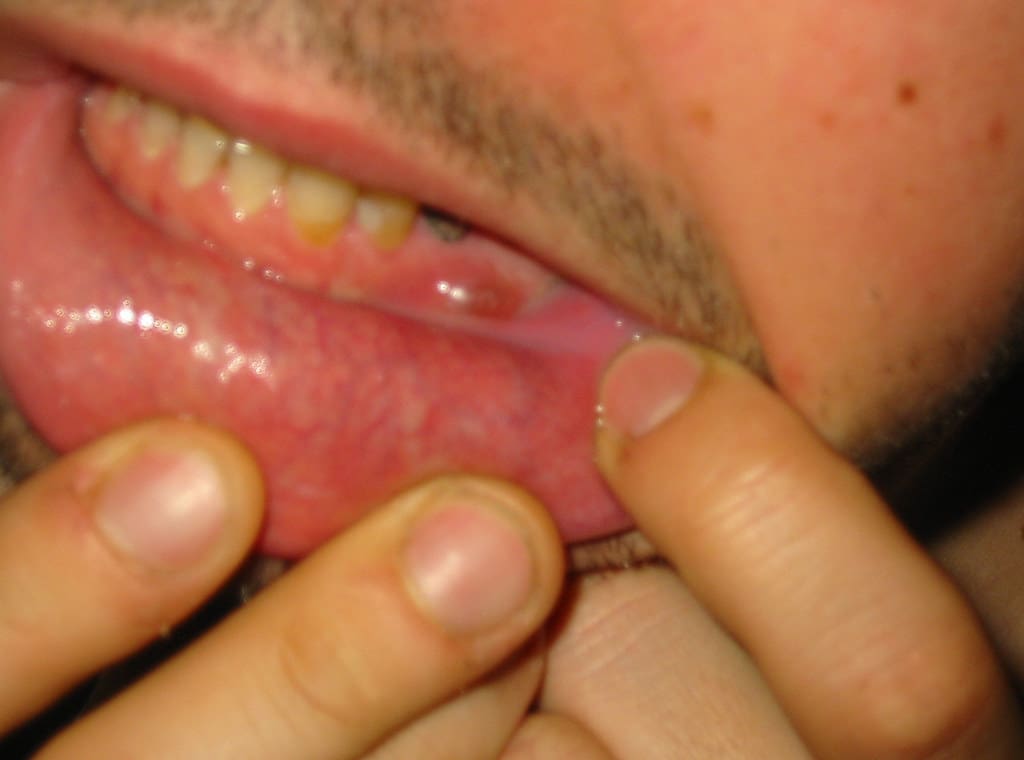Our human body is a miraculous gift by nature. Hence, the majority of the time, humans get infected by the small organisms suspended in the environment. These foreign agents cause sac-like structures on the body, resulting in cysts and abscesses.
These structures are enclosed by walls. The formation of cysts is spontaneous. However, the infection caused by the foreign bodies causes an abscess. An infected cyst turns easily into an abscess. Both cysts and abscesses look the same when ultrasonic waves are used to detect them.
Key Takeaways
- A cyst is a sac-like structure filled with fluid or semi-solid material that may be present in any part of the body. At the same time, an abscess is a localized infection characterized by pus-filled swelling and inflammation.
- A cyst may be benign or cancerous, while an infection always causes an abscess.
- While a cyst may be asymptomatic, an abscess is accompanied by pain, redness, and warmth in the affected area.
Cyst vs Abscess
A cyst is a sac capsule enclosed by distinct abnormal cells formed in the skin or inside your body. It grows slowly and isn’t painful unless it becomes enlarged. An abscess is a pus-filled infection in your body tissues caused by bacteria, viruses or fungi and is painful, irritated, red, and swollen.

Cysts form as a result of fluid secretion that is excessive. The cysts’ walls are created with the help of normal tissues in the surrounding environment. In the case of cyst infections, there has yet to be a case of regional inflammation detected or discovered.
The protein concentration of cyst fluid is minimal. Cysts can vanish quickly or spontaneously with or without therapy. Cysts do not require antibiotic therapy unless they are infected.
The creation of an abscess can occur when there is continuing highly chronic tissue injury. Fibrous tissues form the abscess’s only walls. In the case of abscesses, regional inflammation is very common.
Fluids or pus, which are high in protein, are present in abscesses. Drainage is essential to healing abscesses, which speeds up the healing process. Antibiotics are extremely helpful in treating an abscess because they eliminate harmful germs.
Comparison Table
| Parameters of Comparison | Cyst | Abscess |
|---|---|---|
| Cause of Formation | Excessive secretion of fluids. | Ongoing persistent tissue damage. |
| Formation of Walls | With the help of Normal tissues. | With the help of fibrous tissues. |
| Regional Inflammation | Regional Inflammation can not be seen unless infected. | Regional Inflammation is very common. |
| Fluids contained | Low in Protein content. | Rich in protein. |
| Healing process | Disappear spontaneously. | Drainage to accelerate the rate of healing. |
| Use of antibiotics | Do not require antibiotics unless there is an infection. | The use of Antibiotics is crucial. |
What is Cyst?
A cyst is a cavity that is filled with fluid enclosed by walls. However, these can occur at any place on the whole body. Some common types of cysts are pseudo-pancreatic cysts, Ovarian cysts, fallopian tube cysts and vaginal wall cysts.
In the female body, the ovary absorbs fluid as it contains a lot of follicles. After absorption, they become graffian follicles.
These graffiti follicles are cavities full of fluids. In case the process of ovulation does not occur, then these follicles continuously keep on absorbing fluids and resulting in the formation of a cyst.
Cysts are formed when fluids are secreted excessively. The cysts’ walls are created by the surrounding normal tissues. In the case of cyst-related infections, there has yet to be an instance of regional inflammation.
Cyst fluids are protein-depleted. Cysts can disappear quickly or spontaneously, with or without medical treatment. Antibiotics aren’t needed to treat cysts unless they’re infected.

What is Abscess?
The creation of an abscess might occur if there is continuing highly persistent tissue injury. The abscess’s walls are comprised entirely of fibrous tissues. In the case of abscesses, regional inflammation is extremely prevalent. Fluids or pus are present in abscesses, which are high in protein.
Drainage is necessary to heal from abscesses, which speeds up the healing process. Antibiotics are extremely effective for abscesses because they kill harmful germs.
Abscesses are types of acute inflammation. Acute inflammation. These are caused due to foreign bodies such as microorganisms and infections.
Sometimes body also reacts to inflammation which results in the formation of an abscess. Fluid exudation, increased capillary permeability and dilatation of blood vessels are featured by acute Inflammation.
The space enclosed by the walls is filled with pus and is known as an abscess. Fibrous tissues made the walls up.

Main Differences Between Cyst and Abscess
- The formation of Cysts occurs due to the excessive secretion of fluids. On the other hand, if there is ongoing tissue damage, which is quite persistent, then it can lead to the formation of an abscess.
- The walls of the cysts are formed with the help of the normal tissues surrounding the area. On the other hand, the walls of the abscess are made up of fibrous tissues only.
- In the case of infections caused by cysts, no such case of regional inflammation can be seen or found yet. On the other hand, regional inflammation is quite common in the case of abscesses.
- The fluids contained in cysts are low in protein content. On the other hand, abscesses possess fluids or pus, which are rich in protein.
- With or without proper treatment, cysts can disappear at once or spontaneously. On the other hand, drainage is required to heal from abscesses, which accelerates the healing rate.
- Unless infected, cysts do not require any antibiotics for the treatment. On the other hand, antibiotics are highly beneficial for abscesses as they kill off microorganisms that can be harmful.




